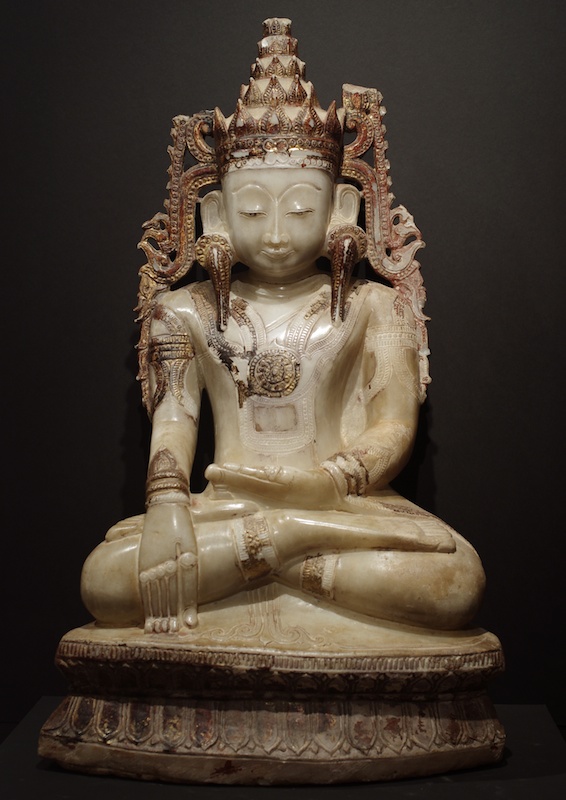2. Ava Crowned Buddha from Burma, 17-18th C
Burmese seated Buddha statue in royal attire, carved from alabaster, 79 cm H. It became popular in the 17th C. to embellish Buddha statues with royal regalia including a crown with large side flanges, a necklace with breastplate, large earrings, bracelets, finger rings and other jewelry. This style already occurs in the Pagan period in Burma, and it probably has its origins in the Pala civilization in India that also had crowned Buddha images. This is called Jambupati (royal) attire, and such a statue is sometimes called a King Buddha. The crown and jewelry emphasis the aspect of the Buddha as a universal sovereign, drawing a visual analogy between the attainment of Buddha-hood and coronation as king. The Buddha is seated on a lotus base throne. The statue has traces of old lacquer and gilding over the jewelry, and a fine patina overall. Statues in alabaster are popular, in part because Buddhists in Burma equate the white translucence of alabaster with religious purity. This statue is classified as Ava style 17-18th C , although it does show Shan influence. Ava is located south of Mandalay and was the capital of Upper Burma and at times all of Burma from 1342 until 1785. Shan kings ruled from their capital at Ava during the First Ava Period from 1364 until 1555. Alabaster Buddha statues in this style are often described as Shan, since there has been much mixing of the early Ava and Shan classification.
The Authentication Certificate from the Thai Antique Association states that this is Ava style, 17th -18th C.


